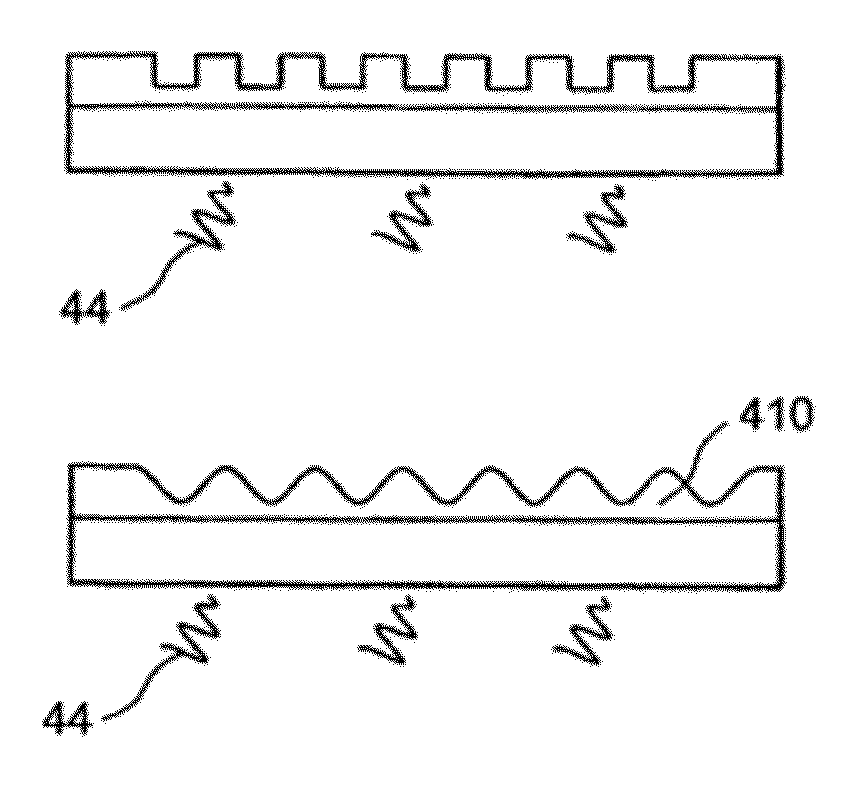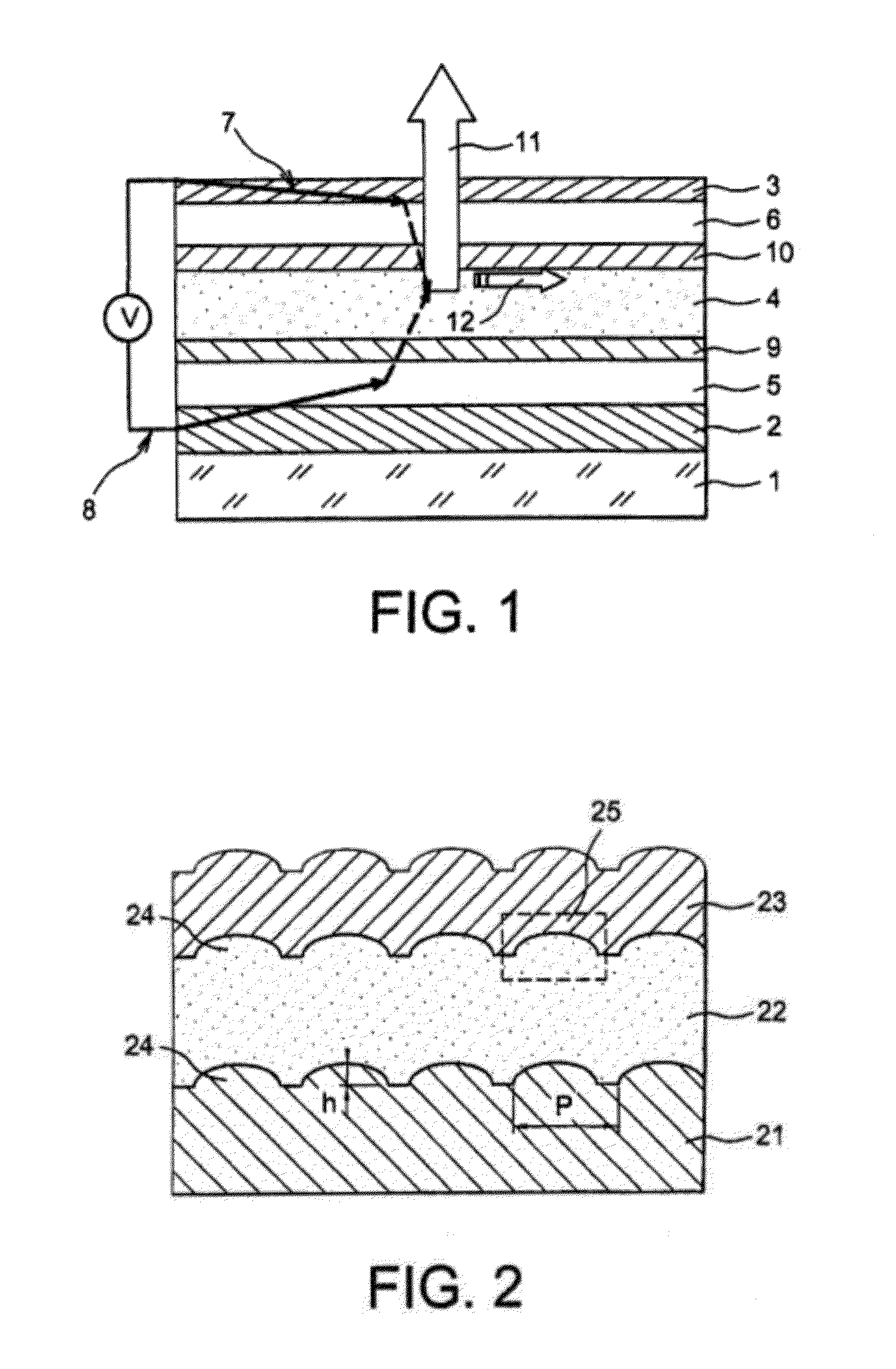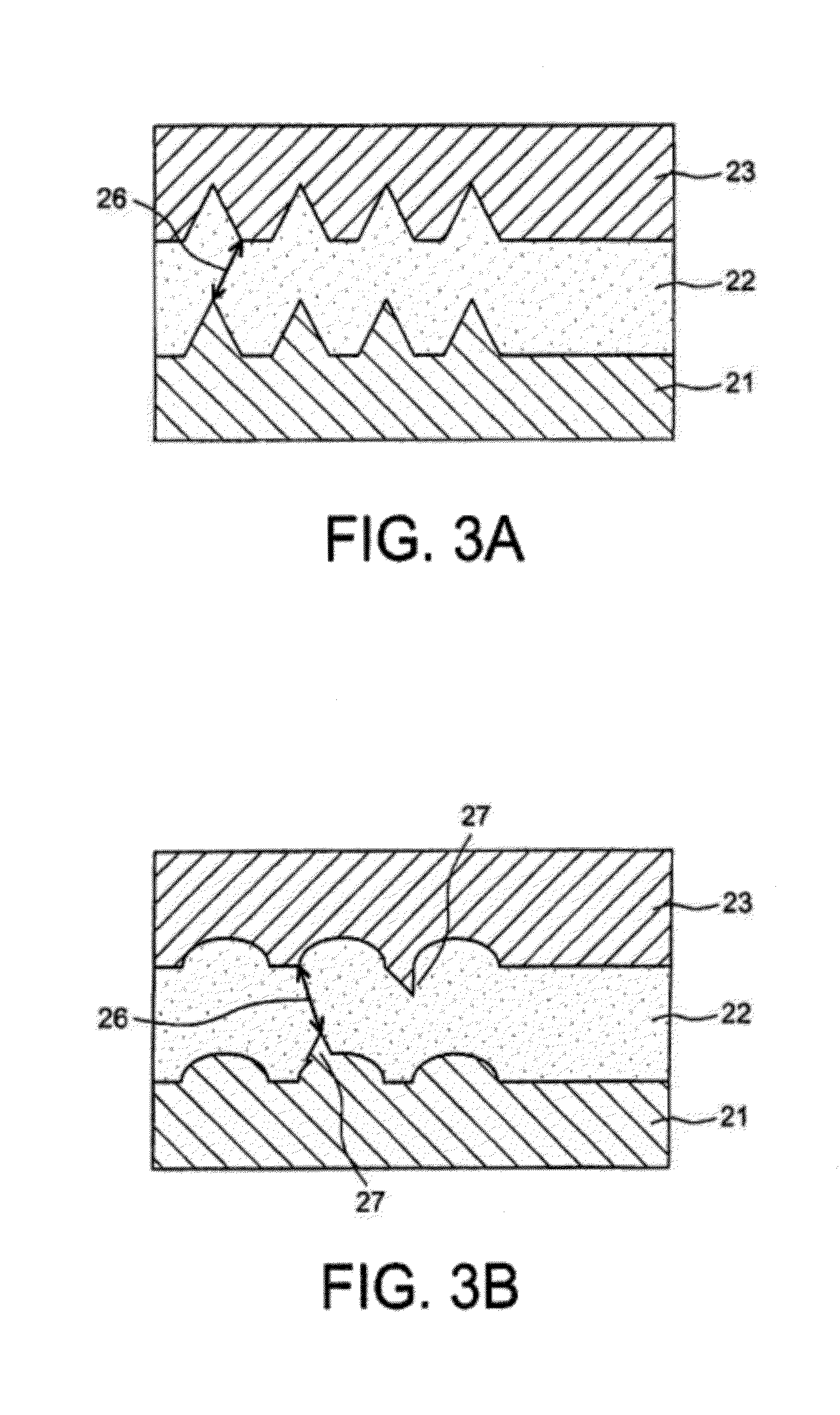Method for fabricating a nanostructured substrate for OLED and method for fabricating an OLED
a nanostructured substrate and oled technology, applied in the direction of electrical equipment, semiconductor devices, organic semiconductor devices, etc., can solve the problems of unusable oled stacks, serious difficulties in surviving subsequent treatment, and emitting molecules of these layers have serious problems, and achieve accurate adjustment of extraction and excess slope
- Summary
- Abstract
- Description
- Claims
- Application Information
AI Technical Summary
Benefits of technology
Problems solved by technology
Method used
Image
Examples
example 1
[0235]In this example, a substrate is prepared by the inventive method using a thermosetting resin, and an organic light emitting diode is then prepared on the said substrate by the inventive method.
[0236]The substrate preparation method comprises the following successive steps:[0237]deposition of the thermosetting resin Neb® 22 from Sumitomo Chemical Japan available on the market, on an 8 inch silicon wafer;[0238]compression of the resin at 110° C. for 5 minutes under 300 mbar, whereby a first nanostructuration is obtained, which is an array of lines or an array of bumps with a period of 200 to 600 nm and heights of 5 to 40 nm;[0239]flow at 125° C. for 60 seconds;[0240]solidification for example for 248 minutes at ambient temperature, and annealing at 90° C. for 60 seconds.
[0241]A second nanostructuration is thereby obtained, “flowed” and stable up to 200° C. which is an array of lines or an array of bumps with a period of 200 to 600 nm and heights of 5 to 40 nm.
[0242]The “OLED” la...
example 2
[0243]In this example, a substrate is prepared by the inventive method using a polystyrene resin, and an organic light emitting diode is then prepared on the said substrate by the inventive method.
[0244]The substrate preparation method comprises the following successive steps:[0245]deposition of the polystyrene resin, on an 8 inch silicon wafer;[0246]compression of the resin at 120° C. for 5 minutes under 300 mbar, whereby a first nanostructuration is obtained, which is an array of lines with a height of 35 nm and a period of 500 nm;[0247]flowing is carried out at a temperature of 150° C. for variable times;[0248]and solidification for example for 248 minutes at ambient temperature, and an annealing at 90° C. for 60 seconds is carried out.
[0249]The annealing or reflowing profiles obtained are then observed for the various flow times. The profiles are shown on the graph in FIG. 5.
[0250]Curve A (points □) shows the profile of the second nanostructuration for a flowing, “remelting” tim...
PUM
| Property | Measurement | Unit |
|---|---|---|
| melting point | aaaaa | aaaaa |
| thickness | aaaaa | aaaaa |
| thickness | aaaaa | aaaaa |
Abstract
Description
Claims
Application Information
 Login to View More
Login to View More - R&D
- Intellectual Property
- Life Sciences
- Materials
- Tech Scout
- Unparalleled Data Quality
- Higher Quality Content
- 60% Fewer Hallucinations
Browse by: Latest US Patents, China's latest patents, Technical Efficacy Thesaurus, Application Domain, Technology Topic, Popular Technical Reports.
© 2025 PatSnap. All rights reserved.Legal|Privacy policy|Modern Slavery Act Transparency Statement|Sitemap|About US| Contact US: help@patsnap.com



